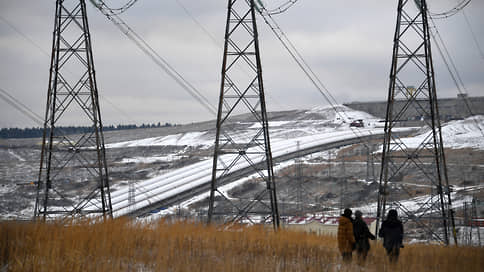Wholesale electricity prices in Komi and the Arkhangelsk region may decrease significantly
[ad_1]

Wholesale electricity prices in Komi and the Arkhangelsk region may decrease significantly after the launch of market pricing mechanisms. In this regard, T Plus and TGK-2 fear that their thermal power plants in these regions may become unprofitable, Kommersant’s sources say. Energy companies, according to Kommersant, are discussing the possibility of obtaining a special forced generation status for their power plants in order to receive a higher tariff. The Ministry of Energy emphasizes that the market “stimulates the most competitive producers.”
Analysts at SCM Market Predictor analyzed the price consequences of the entry of Komi and the Arkhangelsk region into the first price zone of the energy market (the European part of the Russian Federation and the Urals). At the end of 2023, the wholesale price on the day-ahead market (DAM; the trading sector of actually generated kilowatt-hours) in the first price zone amounted to 1.59 thousand rubles. for 1 MW•h. With the implementation of market rules, the price of DAM in Komi will decrease by 30%, to 1.12 thousand rubles, and in the Arkhangelsk region – by approximately 7%, to 1.48 thousand rubles, follows from the estimates of SCM Market Predictor.
Such a low DAM price in Komi is due to excess capacity: electricity production in 2023 exceeded demand by 13%, SCM Market Predictor explained to Kommersant. Electricity that is not in demand by consumers is transferred to the general energy system via long 110 kV and 220 kV power lines, which causes high losses in the networks. An excess of electricity, coupled with high losses during external transmission, leads to low prices in Komi, they added.
The Market Council (the energy market regulator) told Kommersant that their calculations performed in 2023 did not show similar results. Now the Market Council, together with the Ministry of Energy, is updating the calculations, the regulator said.
There has never been an electricity market in Komi and the Arkhangelsk region, and prices for electricity and capacity for local stations are regulated. The Ministry of Energy wants to launch market mechanisms in the summer: electricity will be sold at DAM prices depending on supply and demand, and the price of power will correspond to the price of competitive power selection (payment of power to paid-off stations) of the first price zone. The explanatory note to the draft resolution on the launch of the market in non-price zones of the energy market stated that the launch of the wholesale energy market in the Arkhangelsk region will lead to a reduction in the single-rate price of electricity (electricity plus power) in 2024 by 5.2% (in 2023 prices without taking into account the impact of inflation ). In Komi, the figure may fall by 2.1%.
The installed capacity of thermal power plants in Komi is 2.5 GW; in 2022, electricity consumption there was 8.9 billion kWh, and the maximum power consumption was 1.26 GW. In particular, T Plus owns the Sosnogorskaya CHPP in Komi with a capacity of 377 MW, and Inter RAO operates the Pechora State District Power Plant with a capacity of 1 GW there. The installed capacity of thermal power plants in the Arkhangelsk region is 1.6 GW; in 2022, consumption in the region was 7.2 billion kWh, maximum consumption was 1.1 GW. In the Arkhangelsk region, generation is owned by TGK-2, which owns the coal-fired Severodvinskaya CHPP-1 with 149 MW, as well as the gas-fired Arkhangelskaya CHPP with 450 MW and Severodvinskaya CHPP-2 with 410 MW.
A decrease in prices for power and electricity could lead to a noticeable deterioration in the financial performance of T Plus and TGK-2, several market sources told Kommersant. According to one of them, companies are discussing the possibility of obtaining a special status to cover losses, namely the status of “forced operation” of thermal power plants. Both companies did not comment on Kommersant’s questions.
The Market Council clarified that the DAM model as a whole ensures that suppliers’ costs are covered and their profitability is achieved. Exceptions are possible in cases where generators operate at the lower regulation limit and the DAM price is at a level below fuel costs. In such cases, suppliers may qualify for additional payment under the forced work mechanism, it added.
The Ministry of Energy believes that the energy systems of the Arkhangelsk region and Komi have sufficient flows of electricity to be included in the first price zone and calculations based on market principles. The ministry reminds that the price for the DAM is formed by a marginal method, in contrast to tariff regulation, stimulating the most competitive producers. The final result for the station is formed through the supply of electricity, power and the sale of thermal energy. When included in the price zone, owners have the opportunity to participate in the general program for the modernization of thermal power plants. “The feasibility of classifying stations as emergency is assessed separately,” the Ministry of Energy said.
Market price formation mechanisms have fewer disadvantages than state regulation, says Sergei Sasim, director of the Center for Research in the Electric Power Industry at the Higher School of Economics. The current approach to pricing has not made it possible to achieve high efficiency of existing generation, he notes: “In particular, the actual specific fuel consumption of most thermal power plants in non-price zones exceeds standard values. The market generates more correct price signals without excessive and ineffective bureaucratic efforts.”
[ad_2]
Source link





